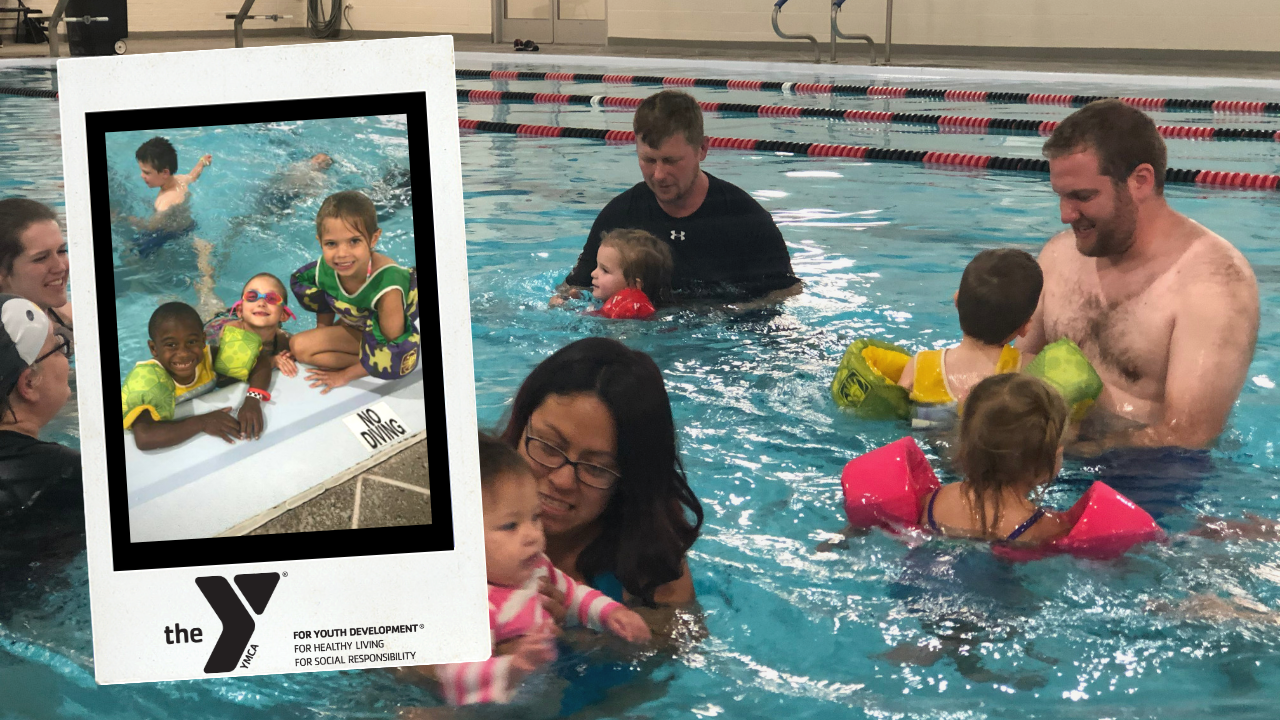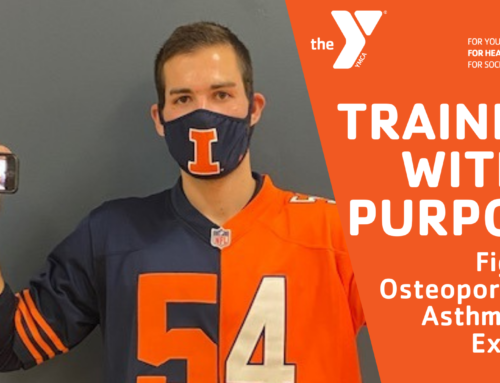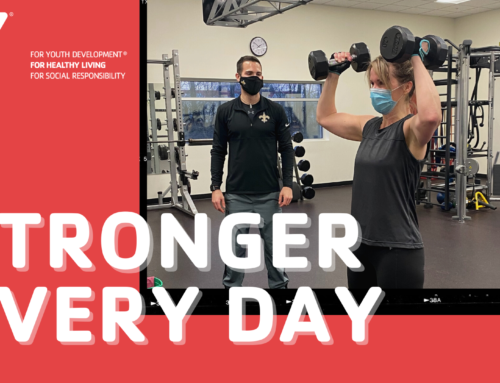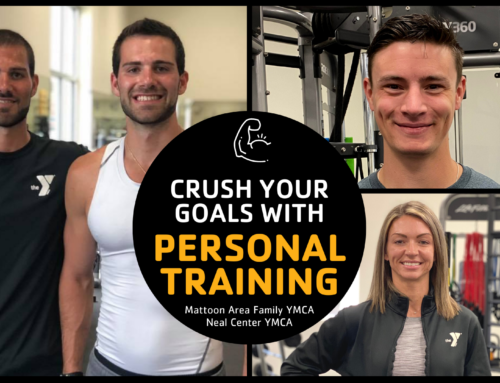Swim Safety is a Year Round Goal
As the weather gets cooler, most people aren’t thinking about swimming, but fall and winter can be a great time to teach children how to be safe around water. Many families enjoy spending summer days at the community pool, boating on the lake, or even relaxing by the pool at their home. Unfortunately, there is a frightening reality that comes with this time around the water. According to the Centers for Disease Control and Prevention, drowning is the third leading cause of unintentional injury-related death and is one of the top five causes of death for people aged 1-14 years. In the United States, from 2005-2014, there was an average of 3,536 fatal unintentional drownings annually- that’s about ten deaths per day. An additional 332 people died each year from drowning in boating-related incidents.
According to the CDC, one in five people who die from drowning are 14 years old or younger, and an additional five children for every fatality receive emergency attention for nonfatal injuries. While this statistic is frightening, the easiest solution is to teach children how to be safe in and around water. Even basic swimming skills can save your child this summer.
Swim Lessons Improve Quality of Life
Not only can swim lessons save lives, but they can also improve your child’s quality of life. According to Swim England, there are endless benefits for infants to learn to swim. Swimming improves balance, develops a healthy heart and lungs, strengthens cognitive function, improves sleeping habits, provides bonding time, and overall strengthens water confidence.
Children develop at their own pace, and not everyone is ready to begin swim lessons at exactly the same age. When deciding whether to enroll your child in swim lessons, keep their emotional maturity, physical and developmental abilities and limitations, and comfort level in the water in mind.
The American Academy of Pediatrics (AAP) recommends swim lessons as a layer of protection against drowning that can begin for many children starting at age one. The YMCA offers swim classes beginning with Parent & Child classes for ages 6 months and up.
What to Look For
The AAP suggests that parents look for programs that focus not only on swim stroke techniques, but broader water survival competency skills. All children should learn how to get back to the surface from underwater, propel themselves at least 25 yards, and get out of the water, for example. Instructors should evaluate children’s progress and give ongoing feedback on their skill levels.
For children of all ages, look for programs that:
- Have experienced, qualified instructors. Swim instructors should be trained and certified through a nationally recognized learn-to-swim curriculum. There should also be lifeguards on duty who have current CPR and First Aid certification.
- Teach good safety habits in, on, and near water. Children should learn to never swim alone or without adult supervision. Instructors should teach children to always ask for permission from parents, lifeguards, or swimming instructors before they get into a pool or natural bodies of water like a lake.
- Teach what to do if they end up in the water unexpectedly. This includes practicing water competency skills such as self-rescue. Lessons should provide training with a variety of realistic conditions, such as falling in and swimming in clothes. Older children also should learn what to do if they see someone else in the water who is struggling, and how to get help.
- Let you watch a class first to see first-hand if it is right for your child. Not all swim lessons are created equal, and parents should investigate options to choose the best fit. Are they swimming most of the time, or are there long periods of inactivity where they are waiting for their turn? Do children get one-on-one attention? Are the instructors friendly and knowledgeable?
- Require multiple sessions. Once children start lessons, you should be able to see gradual but consistent progress in their abilities over time. Continue lessons at least until they master basic water competency skills.
In addition, for children under age four, look for programs that:
- Provide an age-appropriate atmosphere. Your child should feel safe and secure during lessons, with activities that support their social, intellectual, physical, and emotional development. However, children need to develop a healthy respect for water, as well.
- Include “touch supervision.” Whenever infants and toddlers are in or around water—even during swim lessons―an adult should be within arm’s reach to provide “touch supervision.” Parent participation should be encouraged, especially since it also helps families know what to practice in between classes. If you can’t be in the water with your child, consider private classes that offer 1-on-1 instruction.
- Maintain water purity. Young children are more likely to swallow or breathe in water, so water disinfection and maintaining proper chlorine levels is really important. A good program should also require the child to wear a swimsuit that is snug-fitting at the legs to help avoid spreading body waste into the water.
Lessons for Everyone
According to the AAP, recent studies suggest that water survival skills training and swim lessons can help reduce drowning risk for children between ages one and four. Classes that include both parents and their children also are a good way to introduce good water safety habits and start building swim readiness skills. At the Y, our Swim Starters classes for ages 6 months-3 years focus on the following:
- Parent & Child Lessons. Infants and toddlers learn to be comfortable in the water and development swim readiness skills. Parents learn about water safety, drowning prevention, and the importance of supervision.
- Stage A – Water Discovery
- This stage introduces infants and toddlers to the aquatic environment.
- This Stage is for students not yet able to respond to verbal cues and jump on land.
- Stage B – Water Exploration
- This stage focuses on exploring body positions, blowing bubbles, and fundamental safety and aquatic skills.
- This Stage is for students who are not yet comfortable working with an instructor without a parent in the water.
- Stage A – Water Discovery
By their 4th birthday, most children are ready for swim lessons. At this age, they usually can learn basic water survival skills such as floating, treading water, and getting to an exit point. By age five or six, most children in swim lessons can master the front crawl. Remember, swim lessons don’t make kids “drown-proof.” At the Y, our Swim Basics lessons for age three and up focus on the following:
SWIM BASICS
- Ages: 3-5 (Pre-School) and 5-12 (School Age)
- Students learn personal water safety and achieve basic swimming competency by learning two benchmark skills: Swim, Float, Swim, and Jump, Push, Turn, Grab.
- Stage 1 – Water Acclimation
- This stage increases comfort with underwater exploration and introduces basic self-rescue skills performed with assistance.
- For students who are not able to go underwater voluntarily, including their ears.
- Stage 2 – Water Movement
- This stage encourages forward movement in the water and basic self-rescue skills performed independently.
- For students who are not able to do a front and back float on his/her own.
- Stage 3 – Water Stamina
- This stage develops intermediate self-rescue skills performed at longer distances than previous stages.
- For students who are not yet able to swim 10-15 yards on his/her front or back. This is not a formal stroke.
- Stage 1 – Water Acclimation
Swim strokes and skill building come later. At the Y, Swim Strokes levels begin between ages 5-12 depending on the child’s readiness. Students learn additional water safety skills and build stroke technique, developing skills that prevent chronic disease, increase social-emotional and cognitive well-being, and foster a lifetime of physical activity.
-
- Stage 4 – Stroke Introduction
- This stage introduces basic stroke technique in front and back crawl and reinforces water safety through treading water and elementary backstroke.
- For students who are not yet able to swim 15 yards of front and back crawl. This is a formal stroke.
- Stage 5 – Stroke Development
- This stage introduces breaststroke and butterfly and reinforces water safety through treading water and sidestroke.
- For students who are not able to swim front crawl, back crawl, and breaststroke across the pool (25 yards).
- Stage 6 – Stroke Mechanics
- This stage refines stroke techniques on all major competitive strokes and encourages swimming as part of a healthy lifestyle.
- For students who are not yet able to swim front crawl, back crawl, and breaststroke across the pool and back (50 yards).
- Stage 4 – Stroke Introduction
Drowning Prevention Takes More Than Lessons
Swim lessons are just one of several important layers of protection parents should utilize to help prevent drowning. Children should have constant, focused supervision when they are in or near a pool or any body of water. It also is essential to block access to pools. The Consumer Product Safety Commission found that 69% of children under the age of 5 years were not expected to be in the water at the time of a drowning.
At the YMCA, one of our core missions is to teach children to be strong swimmers. The Mattoon Area Family YMCA and Neal Center YMCA in Toledo offer year-round group and private swim lessons.
“The YMCA’s swim lesson program has a great curriculum that builds on each stage as the child progresses,” Austin Birch, Mattoon YMCA Aquatics Director said. “We take children from the Water Discovery and Exploration stages, through swim basics like movement and stamina, all the way up to stroke development and mechanics for those children who want to develop their aquatic skills.”
Recognize the Signs of Drowning
Regardless of your child’s level of skill and comfort in the water, it’s important for all people to learn to recognize the signs of drowning, especially during the summer months. Contrary to what is frequently seen on television, most people do not yell, scream, or wave when they are drowning. Instead, they usually will silently gasp for air for 20 to 60 seconds, giving those around them just a few precious moments to identify the problem.
Since most children make noise when playing in the water, bystanders and parents should pay special attention to children who are playing quietly in the water. If you can see a person in the water who may be in distress, the simplest way to check on them is to ask them, ‘Are you all right?’ If they can answer you, they are probably fine. If they cannot respond, they probably require immediate assistance.
According to the U.S. Coast Guard, there are 10 real-life signs of drowning that people should look for:
- Head low in the water with the mouth at water level
- Head tilted back with mouth open
- Eyes glassy and empty, unable to focus
- Eyes entirely closed
- Hair that has flopped over the person’s forehead or eyes
- Not using their legs, but vertical in the water
- Hyperventilating or gasping
- Trying to swim in a particular direction, but not making headway
- Trying to roll over on their back without success
- Appearing to be climbing an invisible ladder
For more information on swim lessons at the YMCA, call (217) 234-9494 in Mattoon, or (217) 235-2500 for Toledo or click here.






